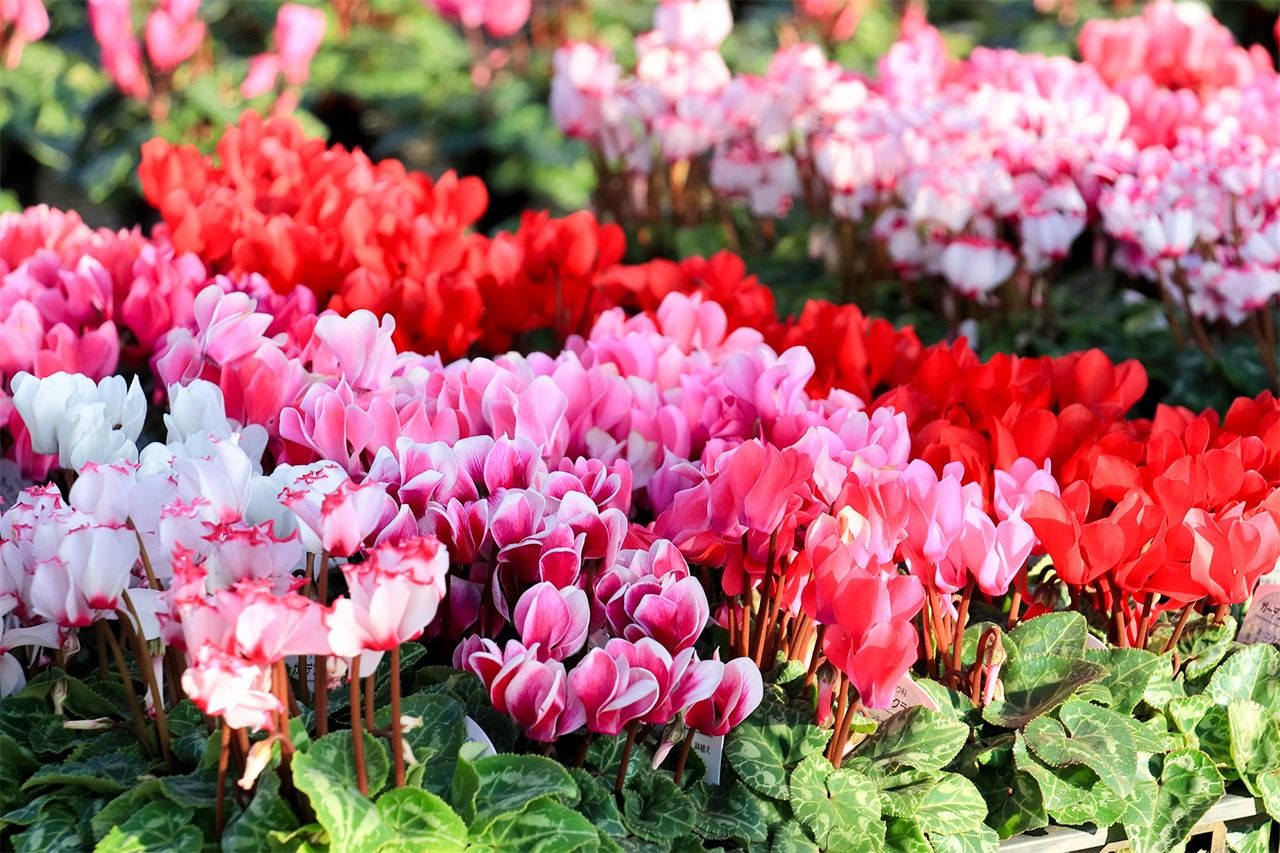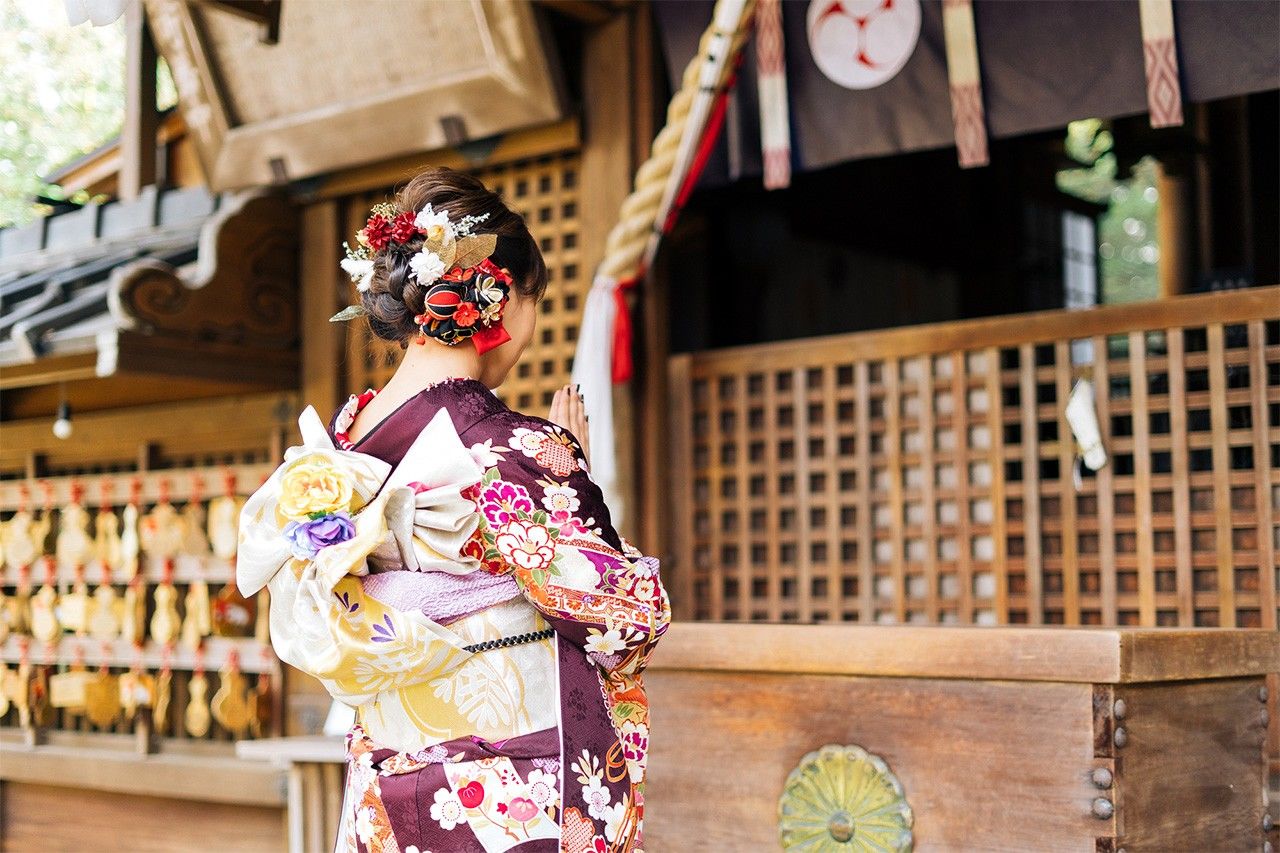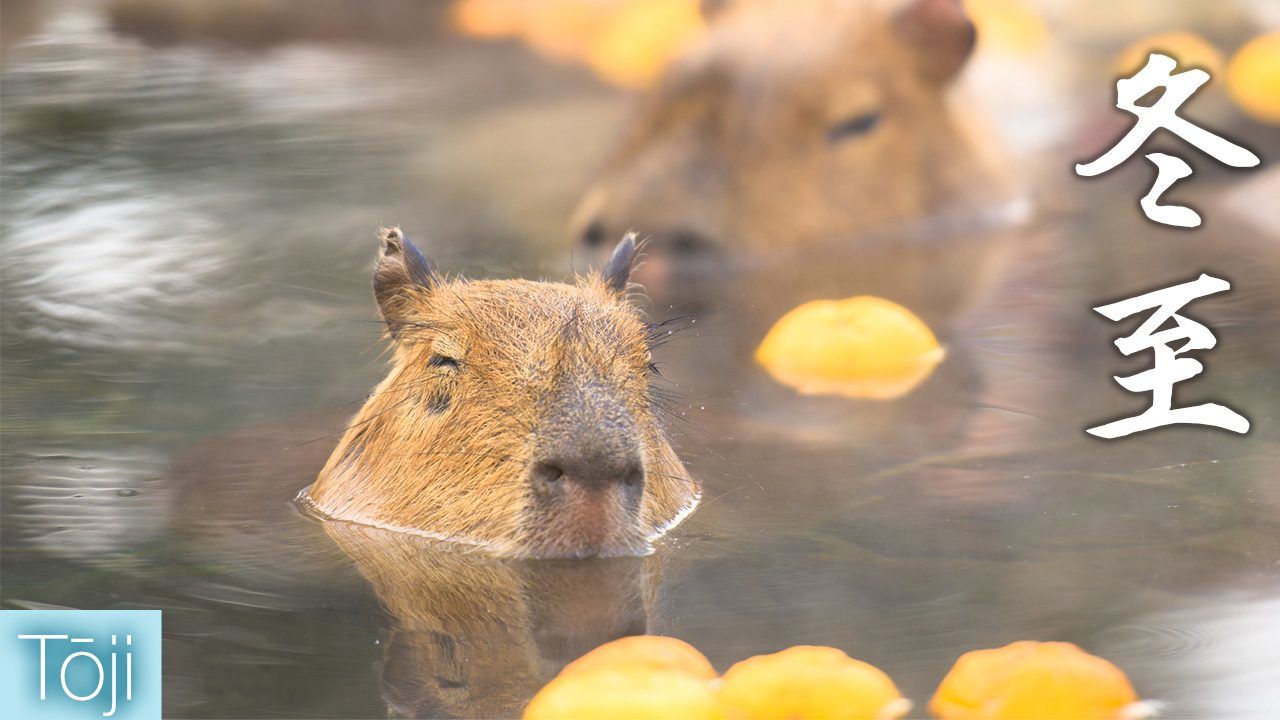
Tōji (Winter Solstice)
Culture Society Environment Food and Drink- English
- 日本語
- 简体字
- 繁體字
- Français
- Español
- العربية
- Русский
In the modern calendar, Tōji (Winter Solstice) falls on around December 22 each year. This is the shortest day of the year in Japan and the rest of the northern hemisphere, when the sun is at its lowest point in the sky. In Tokyo, the daytime is approximately five hours shorter than at the summer solstice. Winter has truly set in, and the cold builds, but from this point the days start to become longer again.
In Japan, people traditionally eat kabocha squash and put yuzu fruit in their baths for the winter solstice.
This article will look at events and natural phenomena in the period roughly from December 22 to January 5.
Yuzu Bath (December 22)
In Japan, there is a tradition of putting yuzu, a yellow aromatic citrus fruit, in the bath for winter solstice. Yuzu are harvested from October to December and the aromatic rind and juice, quite distinct from lemon or lime, often feature in Japanese cuisine. When yuzu is added to a hot bath, the strong aroma freshens the air, and by association, was believed to dispel unhealthy “bad air” and thereby prevent colds. It is said that the practice began as a way to entice customers with the introduction of sento (public bath houses) in the Edo period (1603–1868). Whole yuzu can be put in the bath, or they can be first cut open and placed in a mesh bag. Taking a yuzu bath in the hope of preventing a cold could be overoptimistic, but it may enhance blood circulation and the aroma is certainly relaxing.
At Izu Shaboten Zoo in Shizuoka Prefecture, keepers provide a warm bath for capybaras to enjoy through the winter. With yuzu added at the solstice, it is a popular sight for visitors and online fans.
Kabocha Squash
It is also said that eating kabocha (sometimes called Japanese pumpkin) on the winter solstice will ward off colds. In the past, there were few available options for yellow-green vegetables in this season. Kabocha, which can be easily stored at room temperature, were therefore a prized vegetable. They are a rich source of vitamin C and beta-carotene, which the body converts into vitamin A. In Japan, kabocha is often stewed, fried as tempura, or used in potage and sweets.
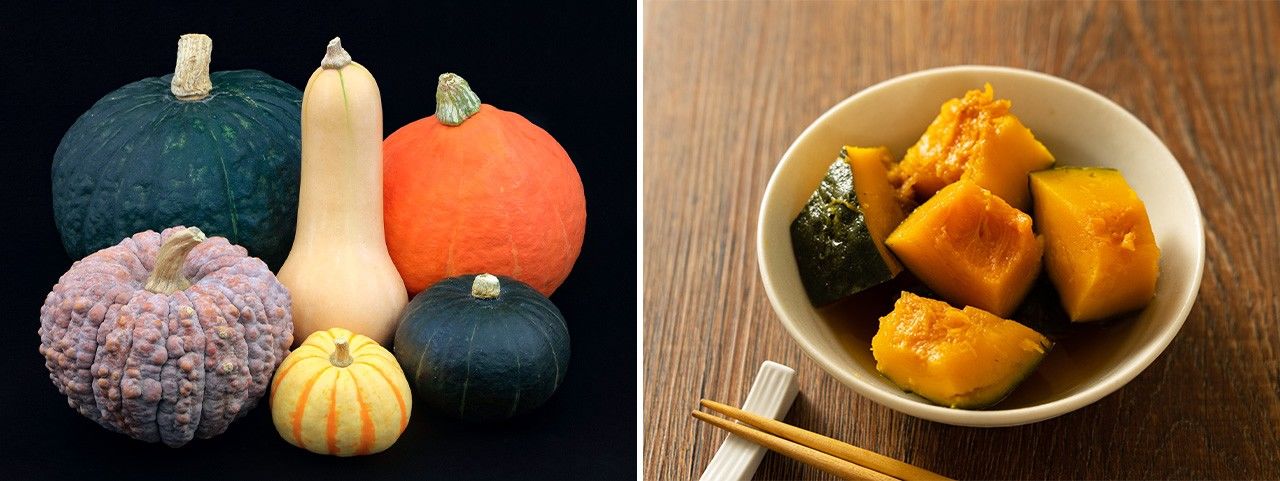
A plethora of pumpkin: (clockwise from upper-left) black chestnut, butternut, colinky, suzuki, puccini, and chrysanthemum kabocha (left); boiled kabocha with dashi broth. (© Pixta)
Cyclamen
The petals of cyclamen resemble flames, and so, in Japanese, the flowers are also known as kagaribi-bana (bonfire flowers). A perhaps surprising name for them is buta-no-manjū (meaning “pork buns”). This is a translation of the common name by which they were known in English at the time of their introduction to Japan: “sowbread.“ The name apparently originates from pigs eating the bulbs of cyclamen. They are treasured for their extended flowering period. The large range of varieties now available makes them a popular year-end or Christmas gift.
Christmas (December 25)
Although few people celebrate it as a religious festival in Japan, Christmas is a firm fixture in the event calendar. Many people eat chicken and Christmas cake, a sponge cake made with whipped cream and strawberries. Known in Japan as “shortcake,” it was apparently first created by cake and confectionery manufacturer Fujiya in 1922. It is quite different from shortcake in the Britain and United States, which is usually strawberries and cream layered between biscuits.
It is believed that the Japanese custom of eating chicken for Christmas is a variant on the Western tradition of serving turkey, which is not widely available in Japan. Japanese terms for Christmas tree (seiju, “holy tree”) and Christmas cake (seika, “holy sweet”) have made their way into haiku poetry as seasonal words.
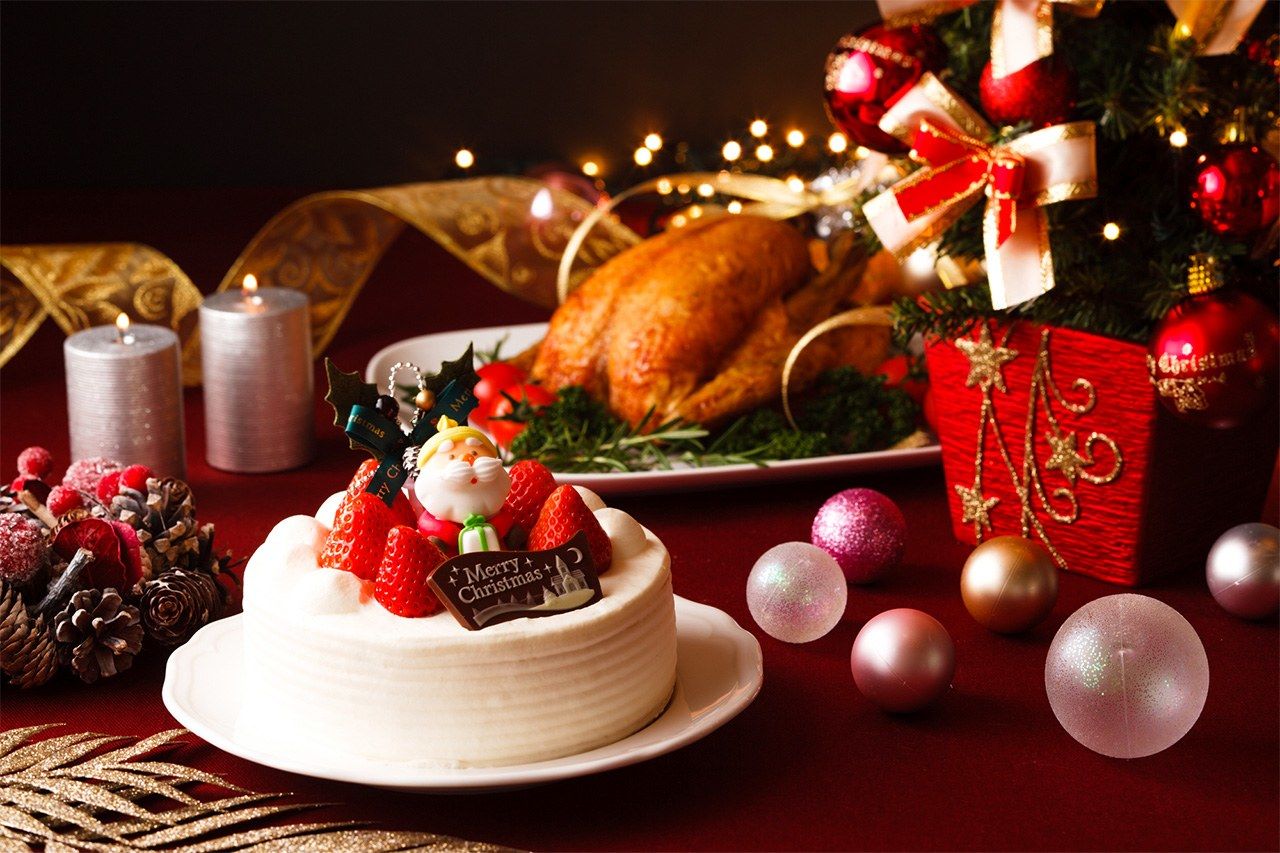
Japanese Christmas cake and roasted chicken. (© Pixta)
New Year’s Decorations
On December 26, Christmas decorations are hurriedly replaced with traditional New Year ornamentation. Kadomatsu (gateway pines) are placed outside the home to invite the New Year gods in and to ward off evil. Shimekazari (decorative rope) is hung outside the home entrance to indicate that preparations have been made to welcome the gods.
Ideally, all should be ready for New Year by December 28. The reasoning for this is the bad connotations of 29 (the number 9 can be pronounced ku, a homophone for “suffering”). Installing New Year’s ornaments on December 31 is taboo because of the association of one-night decorations with those used for mourning overnight before a funeral.

Kadomatsu (left) and shimekazari. (© Pixta)
Kagami mochi
Kagami mochi consists of a small mochi or rice cake placed atop a larger one. The large mochi represents the sun and the smaller one the moon, as a wish for the accumulation of good fortune. Common adornments include konbu (dried kelp), plants like urajiro ferns and yuzuriha, and daidai (bitter orange), but this varies by region.
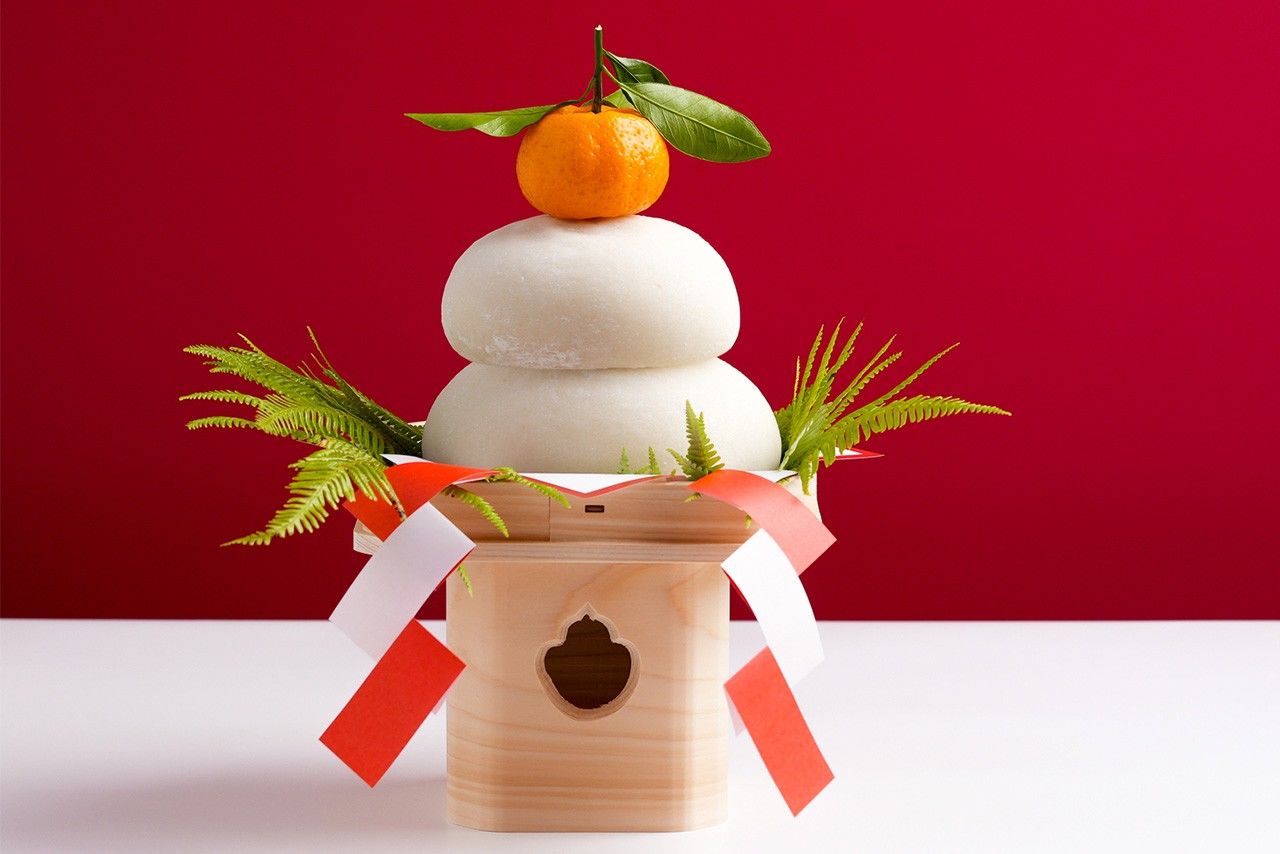
Kagami mochi decorated with a daidai bitter orange, urajiro fern, and shide (zigzag-shaped paper). (© Pixta)
Ōmisoka (December 31)
Ōmisoka is the last day of the year—New Year’s Eve. After osechi ryōri (New Year’s dishes) has been prepared and the cleaning finished, people eat toshikoshi soba noodles. The long, thin noodles represent longevity; and the ease with which they can be cut is a symbolic break from calamity and suffering. Soba is therefore an auspicious food to welcome in the New Year. Another theory behind the popularity of soba is that it can be cooked and served quickly, which is handy after a busy day of preparations. At midnight on New Year’s Eve, temples ring their bell 108 times to dispel the 108 worldly passions that bring suffering according to Buddhist belief.

A monk rings the temple bell for New Year’s Eve (left); toshikoshi soba with tempura shrimp. (© Pixta)
Shōgatsu (New Year)
The New Year period, known as Shōgatsu or less commonly as Mutsuki in Japanese, is a time of festive celebration. Only New Year’s Day is a national holiday, but most businesses stay closed until January 3. The New Year’s greeting akemashite omedetō gozaimasu is believed to express congratulations at the arrival of the gods in the home to start the year.
First Sunrise (January 1)
Since ancient times, Japanese people believed that spiritual beings, kami, inhabited all objects, including the sun. At sunrise, people therefore pray for an abundant harvest and to avert misfortune. The first sunrise of the year, known as goraikō, is especially important due to the arrival of the New Year gods, and is therefore a time to pray for good fortune for the whole year. The practice is said to date back to the Edo period.
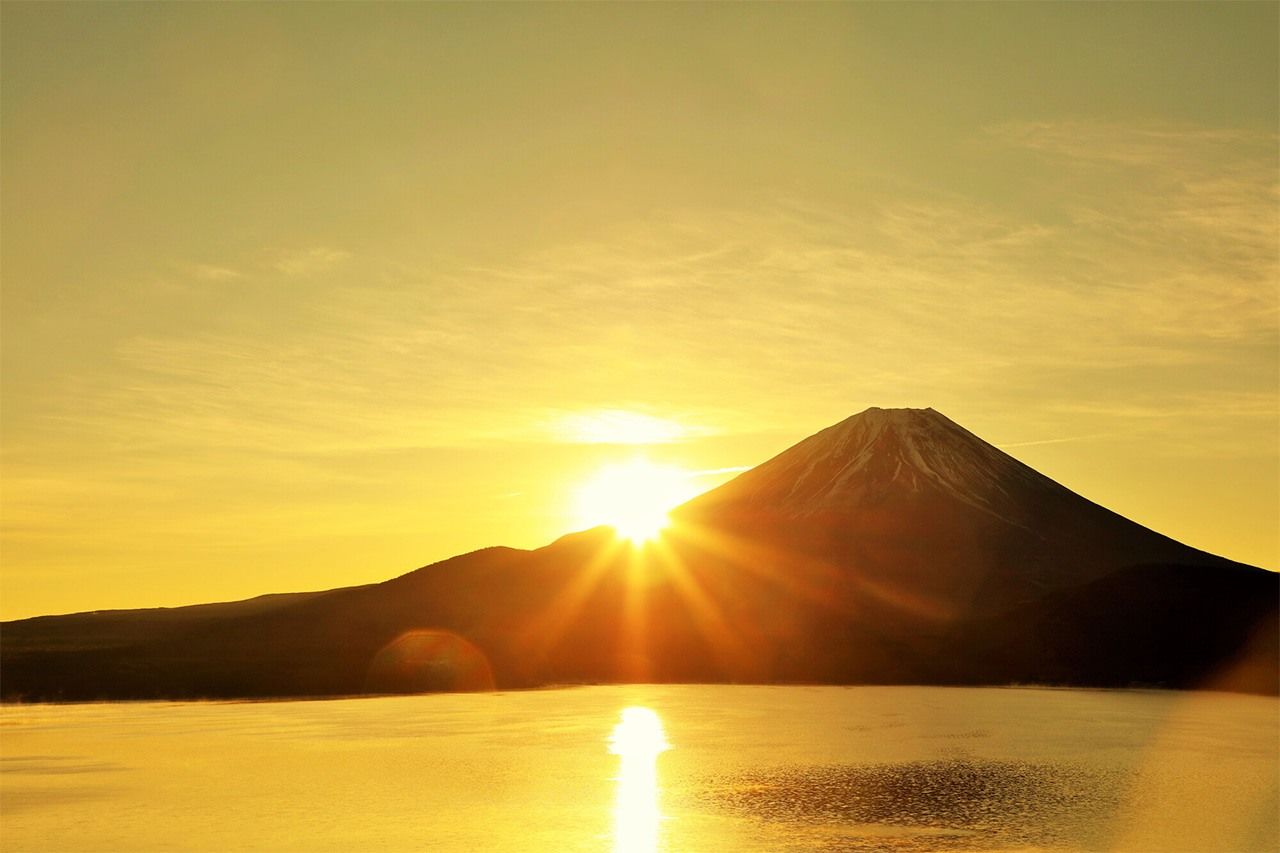
First sunrise at Mount Fuji. (© Pixta)
Osechi ryōri
Osechi ryōri originally referred to dishes prepared for the gods at seasonal festivals. Later, it was applied to special foods eaten at New Year. Each of the dishes included in osechi ryōri has its own significance, such as wishing for safety of the family, longevity, fertility, an abundant harvest and so on, to enjoy all the best in the coming year. The foods generally stay fresh for a few days, allowing for a short, well-deserved break from cooking.
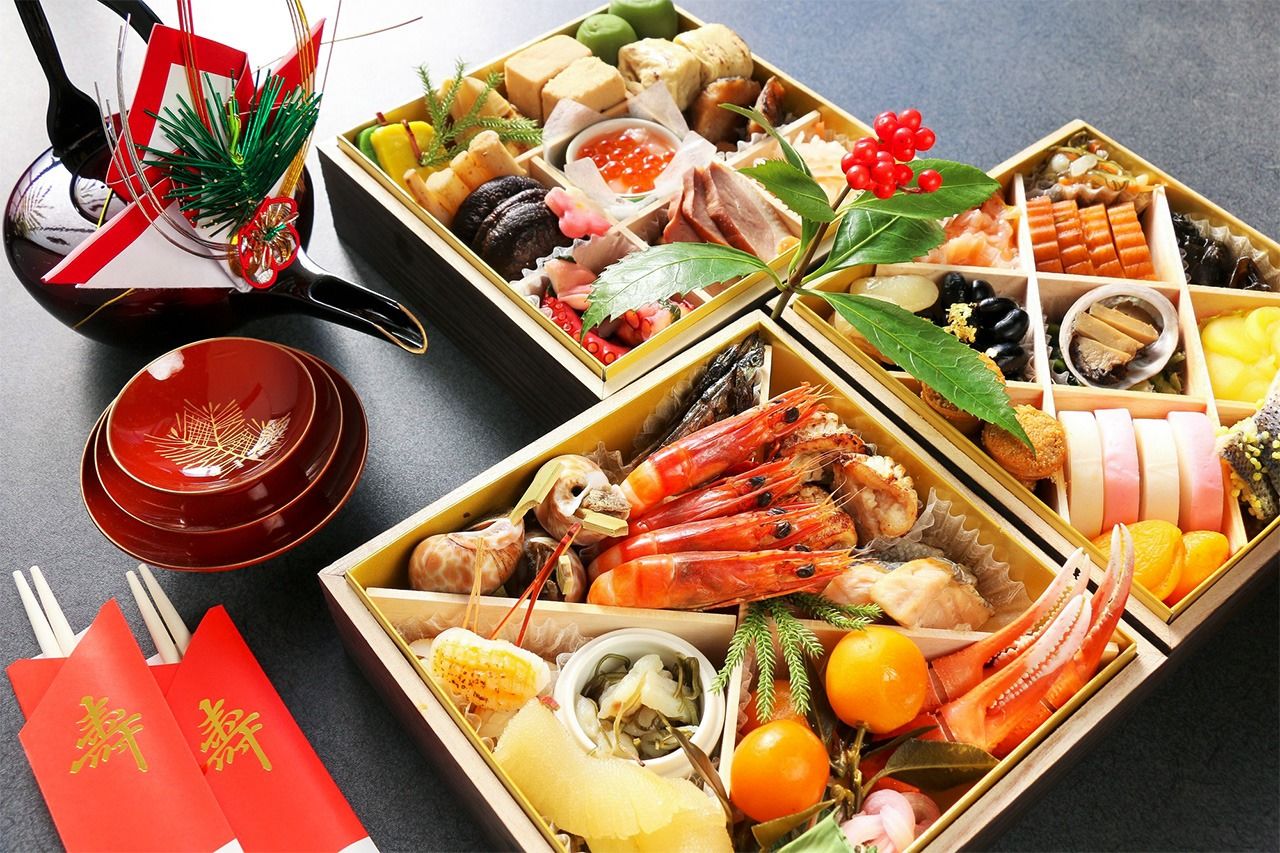
Boxed osechi ryōri, a decanter of otoso (New Year’s spiced sake), and sake cups. (© Pixta)
Zōni
Zōni is a soup enjoyed at New Year’s that contains mochi and vegetables. Eating it is said to be a way to “ingest” the toshigami (deities of the year). Zōni (literally “assortment stew”) is so named for the miscellaneous ingredients that are cooked together. Recipes for zōni vary across Japan.

Zōni containing kakumochi (rice cake blocks) (left); round mochi filled with red bean paste are often added in Kagawa and Kumamoto Prefectures. (© Pixta)
Otoshidama
Otoshidama once referred to the round kagami mochi rice cakes dedicated to the gods. These would then be split among the family for a share of vitality for the year. Otoshidama now refers to pocket money gifted to children by older family members at New Year. The money is given in little decorated envelopes called pochibukuro. The term pochi conveys that it is only a small present.
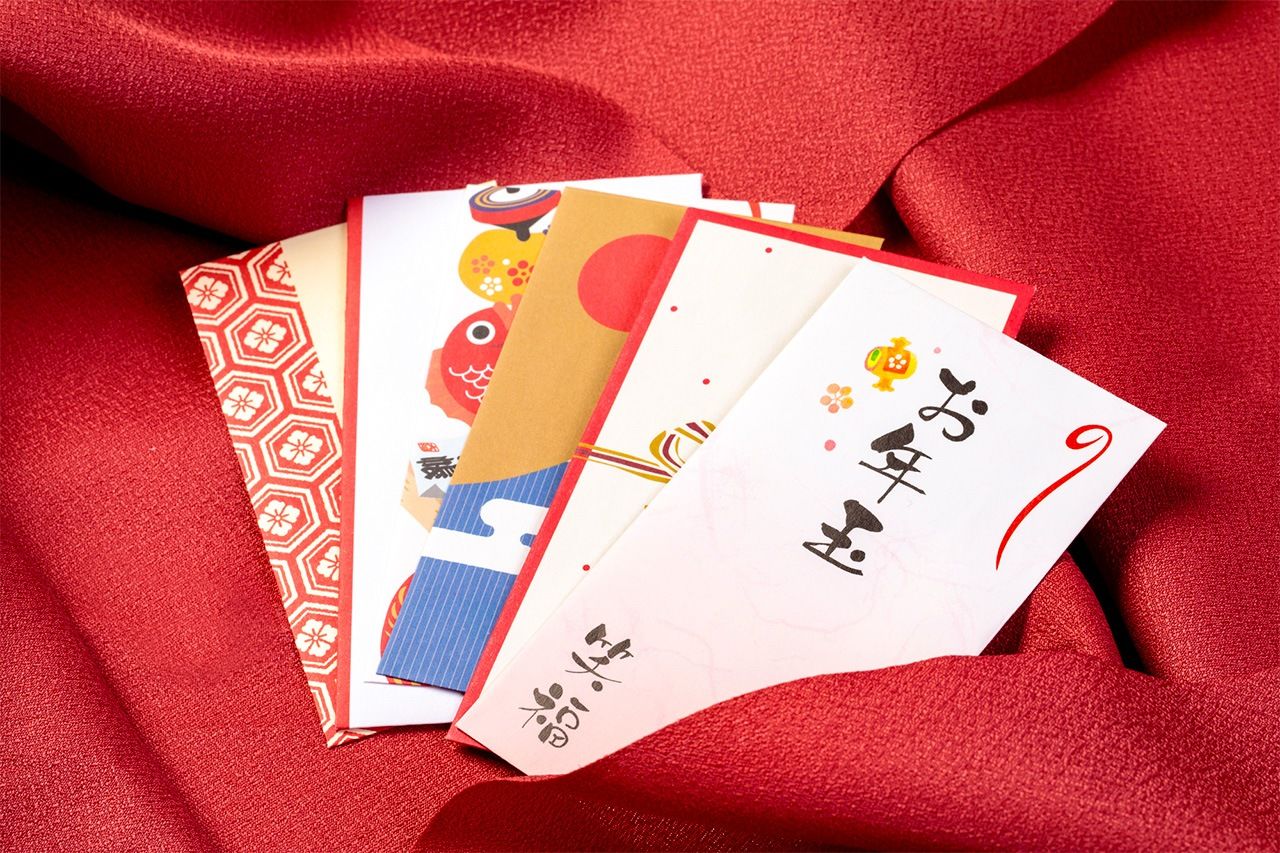
Money envelopes for New Year’s otoshidama. (© Pixta)
Hatsumōde
Early in the New Year, it is customary to visit a local temple or shrine to give thanks for the previous year and to pray for the coming year. Hatsumōde means “first visit.” The custom is said to originate in the Heian period (794–1185) practice of toshikomori, where the family heads of shrine parishioners would stay at the shrine overnight on New Year’s Eve to pray. This custom was later divided into New Year’s Eve and New Year’s Day visits.
(Supervised by Inoue Shōei, calendar researcher and author, Shintō minister, and guest lecturer at Tōhoku Fukushi University. Banner photo: Capybaras enjoy a warm bath with yuzu on the winter solstice. © Pixta.)
New Year zoni seibo Christmas soba yuzu solar terms mochi Ōmisoka osechi ryōri Tōji otoshidama

